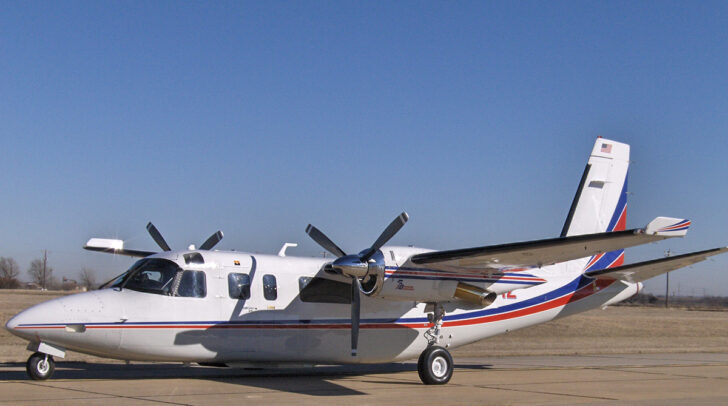
Twin Commander Aircraft recently issued two unrelated Maintenance Alerts addressing operator questions and concerns. While not mandatory, they provide guidance on additional areas for inspection, and alternative parts to alleviate problems caused by the global supply chain shortages.
As certain tire sizes are becoming harder to find, alternatives can get operators flying faster. The factory has confirmed that 10-ply tires (8.50×10 PR TL per TSO C62) are approved on the 690D serial numbers 15039 through 15042, and 695A serial numbers 96092 through 69100.
The two different tire sizes require different pressures. For the 16-ply tire a placard indicating 93 PSI is affixed to the main landing gear, while the 10-ply tire should be filled to 74 PSI, necessitating placards. According to the alert, the factory is working on a pilot’s operating handbook update that will reference the alternate tire and tire pressure requirements.
It’s also important to note that according to the alert, the two tire sizes can’t be mixed. So, changing one tire requires changing both.
Most pilots are familiar with using control gust locks for their ailerons and elevator, but it’s not until moving into larger aircraft that the need arises to use a rudder gust lock. Maybe that’s why it’s not routine for all pilots, even though these commercially available devices can prevent damage.
Twin Commander Aircraft’s recent Maintenance Alert on Part Number 420077, the rudder torque tube horn assembly, indicates what can happen when a gust lock isn’t used. Impacting the 685, 685A, 690, 690A, 690B, 690C, 690D, 695, 695A, and 695B, the alert describes a situation in which the rivets on the rudder torque tube can shear in a strong surface wind event.
In one documented event, the wind slammed the rudder so hard it sheared the rivets, which aren’t visible in a normal pre-flight inspection. The rivet heads remained in place, but the torque tube turned slightly.
The factory recommends at the next inspection, or if the rudder is slammed hard against the stops, that technicians inspect the rudder torque tube. The eight-step inspection process includes gaining access to the torque tube, using a feeler gage to check the rivet heads, and if everything is working well, to make witness marks to ease future inspections.
While not a widespread problem, potential damage that occurs as a result of operation outside the design envelope of the airplane can be a major safety concern, and inspecting the area more thoroughly is a smart part of a detailed and careful maintenance program.
Contact Pam Brown at info@twincommander.com to ensure you receive all future factory communication.
